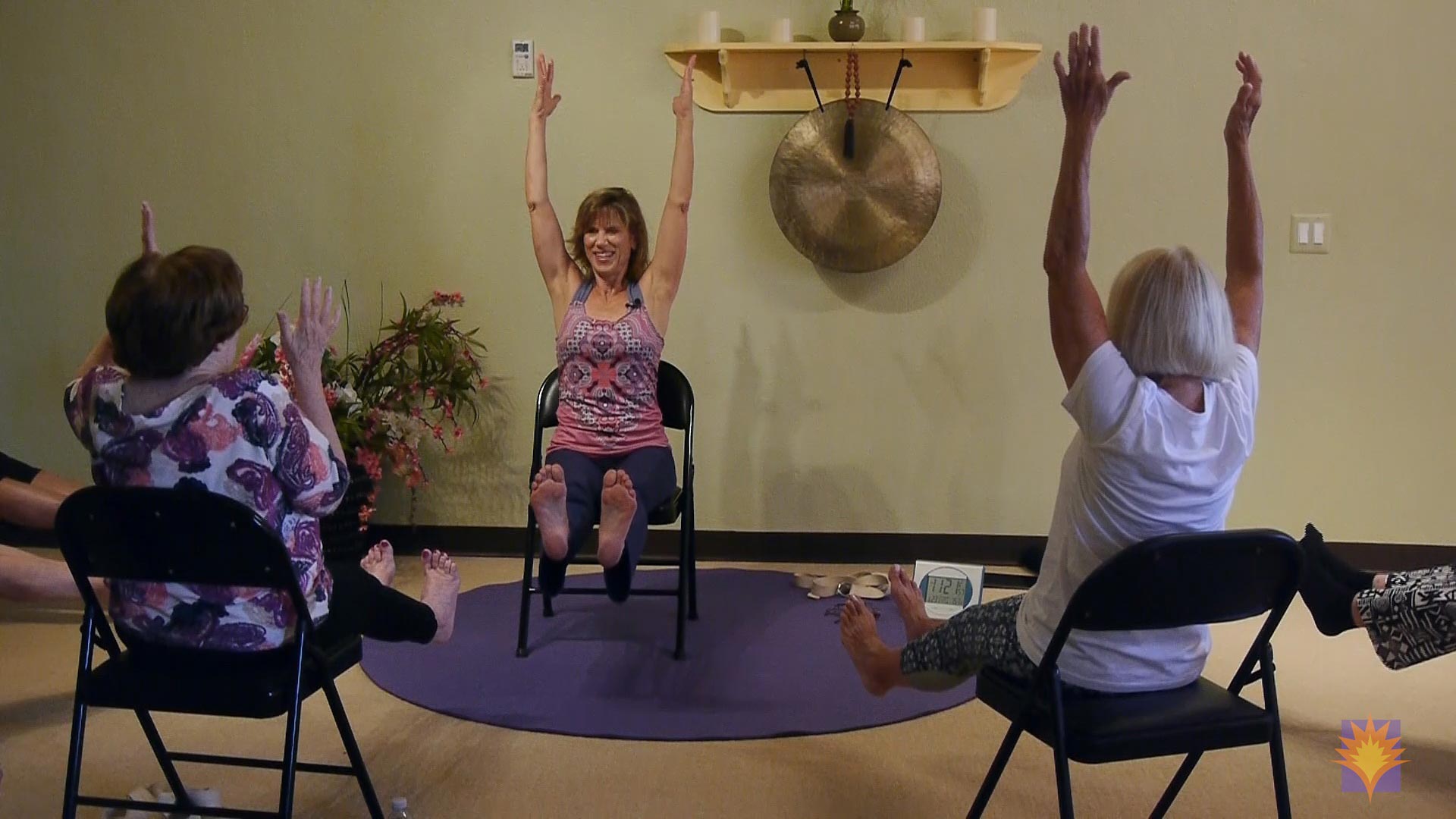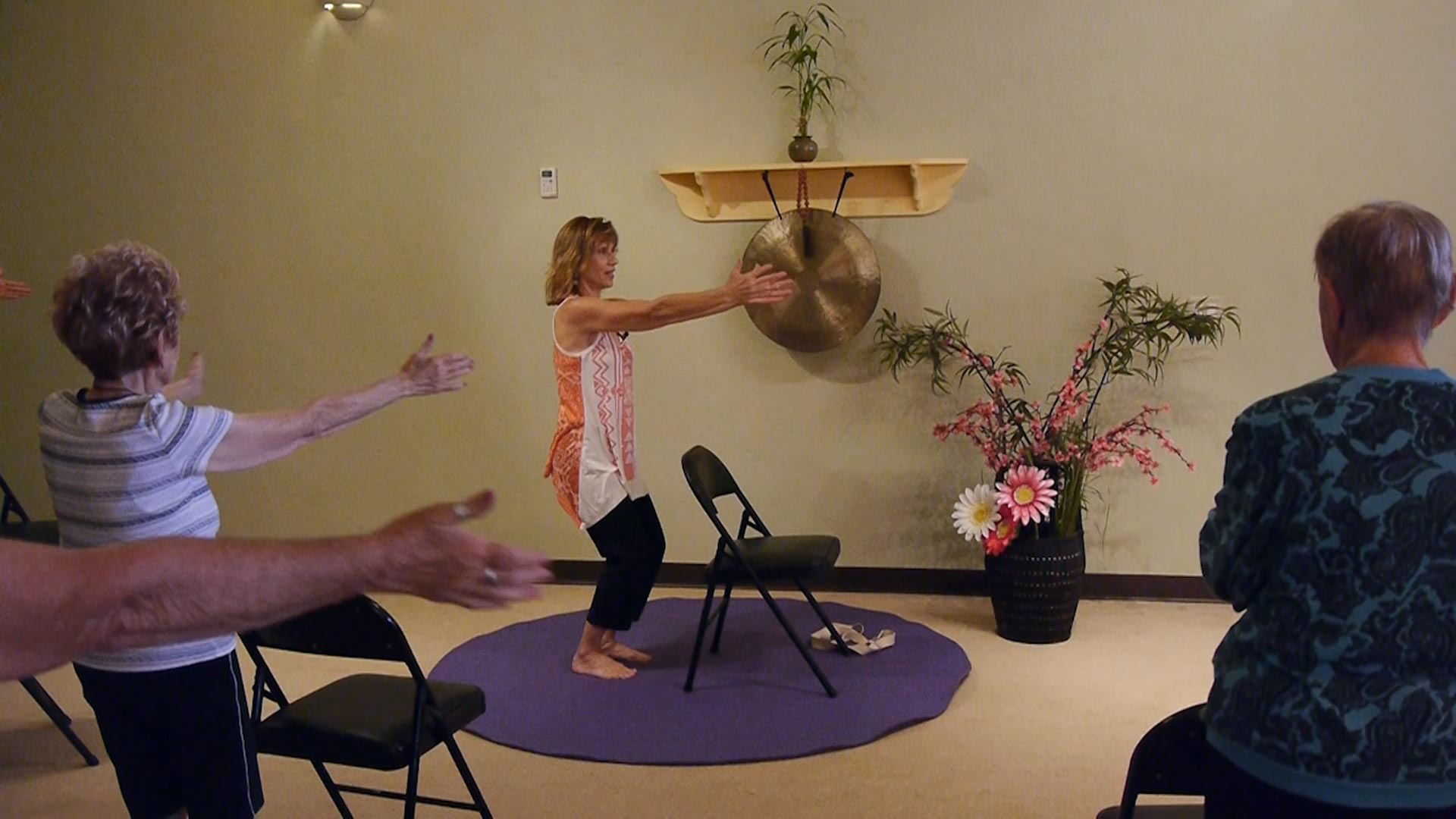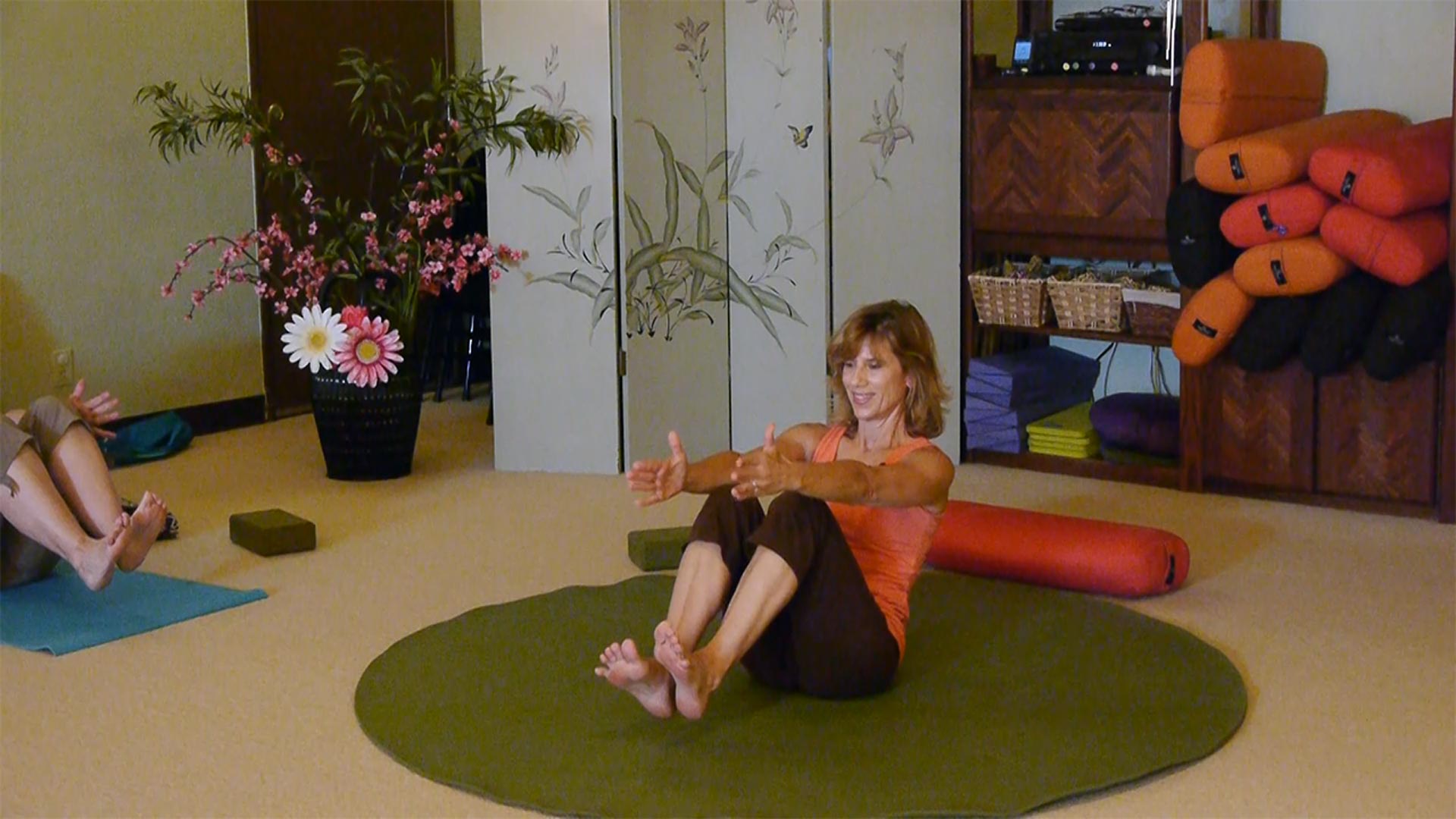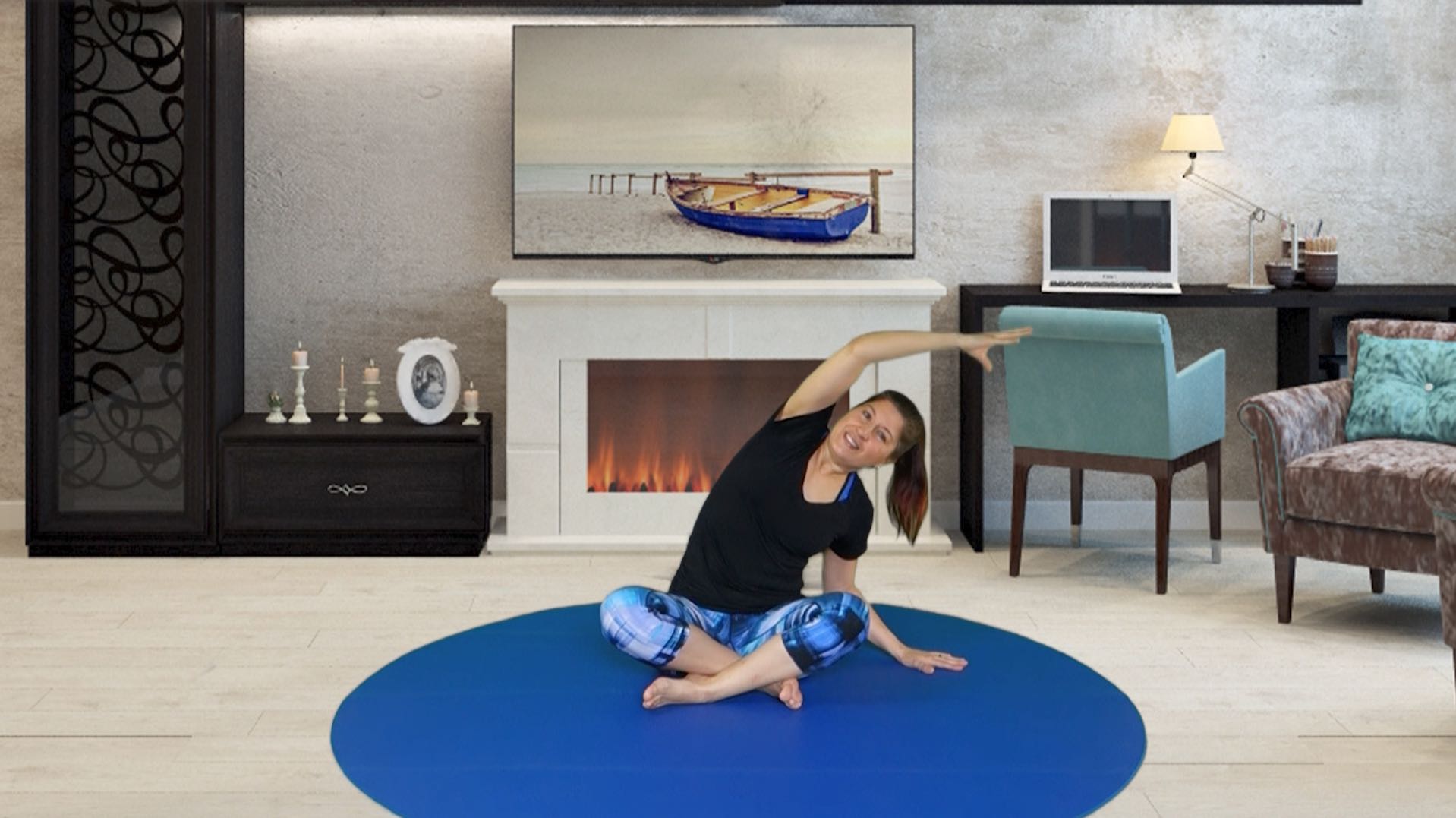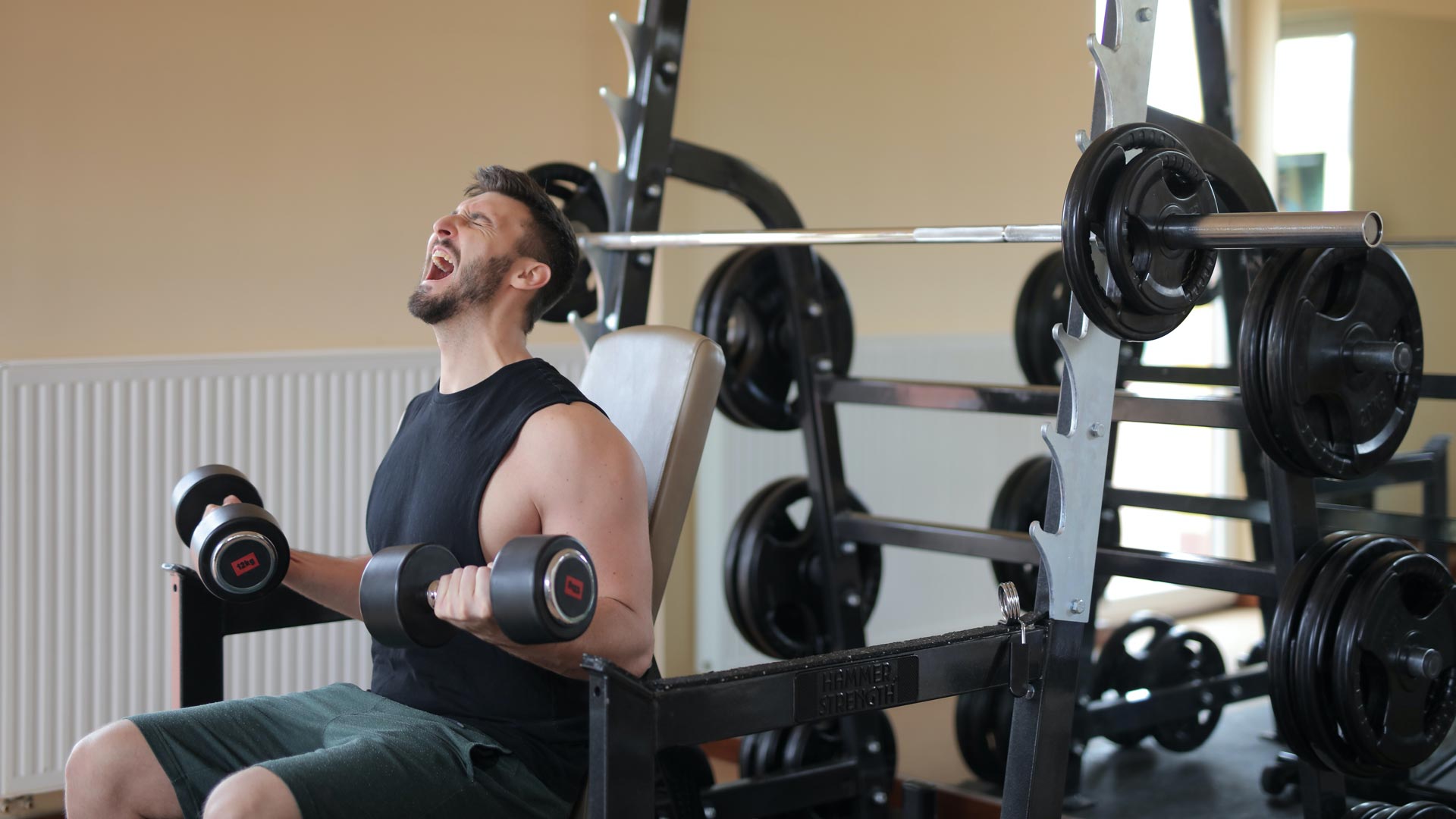
Yoga Vista is all about helping people stay healthy and strong on all levels as they age. However, in order to build and maintain physical strength, some people choose to lift weights as part of their health and fitness routine. For example, I remember one such individual who came to one of my Gentle Yoga classes.
He was a young man in his late twenties and a devout weight-lifter, but he seemed to really appreciate all the benefit he got out of the deep stretches we practiced that day. After class, he confided in me that he had faced a dilemma that morning: whether to hit the gym for another strength-training circuit or go to his first ever Yoga class. That was when his low back had called out: Yoga!!! Subsequently, he was extremely thankful that he had listened to his body’s request. As it turns out, he believed his desire for pumped-up muscles was waning in favor of comfort and ease in his body.
Strength vs. Flexibility
Strength-training can be extremely beneficial and empowering. However, those who focus on making gains only through concentric muscle contractions may find themselves more prone to injury and stiffness. Here is some Yogic wisdom for those aiming to enhance their body strength in a balanced and sustainable way.
In one of Yoga’s core texts, the Yoga Sutras of Patanjali, the principle of balance is applied to keeping the body a fit vessel for the soul. For example, in Yogic terms, physical fitness is accomplished through a balance between sthira (steadiness or strength) and sukha (ease or suppleness). It’s the simultaneous balance of those dynamics that makes an asana (Yoga posture), in which the mind can take a comfortable seat in the body.
Counter-intuitively, a rock-hard muscle isn’t as strong as we might think it is. When strengthened to the point of tension, a bulky muscle can stress nearby joints and connective tissue. In addition, it can inhibit blood flow and cause a once robust area to calcify over time. In the words of Yoga Therapist Monique Lonner from Soul of Yoga, “what is tense is weak.”
Muscle Contractions used in Yoga
There are three types of muscle contractions generally utilized in Yoga practices:
- Concentric contractions – make shorter, bulked-up muscles
- Eccentric contractions – elongate muscles
- Isometric contractions – balance the length and strength of muscles
Yoga’s inclusion of all three types of muscle contractions makes for strong, but supple muscles. In other words, this helps us move with integrity and avoid injuries or discomfort stemming from our muscle fibers being wound too tight.
Watch the Chair Yoga video below for some great moves for lengthening and strengthening the key muscles of the arms. No gym pass necessary!
How you can get Toned Arms with Yoga without lifting weights! Go Sleeveless Again!
Yes, you can get toned muscles and stronger bones without having to lift weights! How can that be? Such as using the power of resistance (like moving through mud), your muscles and bones will get stronger. Try these 3 Yoga sequences to help you build tone and strength in your upper body so you can lift and carry the things you need to!
Yoga for Building Strength
This weight-free approach to strong arms can help individuals with soreness or pain in the wrists or shoulders. It can also benefit those for whom putting pressure on the arms, wrists or hands is not advised. Furthermore, these great moves are excellent for unwinding the stress on our tissues from driving, computer work, or reading articles on our smartphones. 😉
To help you find more muscle strengthening exercises without weights, look up our Wellness Practices for Muscular Strength. We created it just for you!
Wishing you strength and flexibility,
Sherry
To watch a video related to this Topic, click on an image below:
Note: The videos listed are included in all YogaVista.TV subscription plans.
CREDITS: Author, Sherry Zak Morris, Certified Yoga Therapist
Co-Author, Susana Jones, Certified Yoga Therapist
Editor, Maria Perez, Certified Yoga & Group Fitness Instructor

